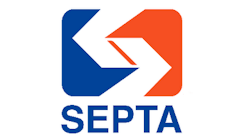City and transit officials unveil Philadelphia’s Transit Plan
Philadelphia officials, regional partners and representatives from the Southeastern Pennsylvania Transportation Authority (SEPTA) released their collective vision for the future of public transit in the city. The vision is one that connects residents to opportunity, supports the economy and fights climate change.
The “Philadelphia Transit Plan, A Vision for 2045,” is a 192-page document that lays out a simple vision: A city connected by transit. How to deliver on that vision includes plans for policy - including improvements to design, fare structures, integration and equity - enhanced bus corridors, modern high-capacity transit and an implementation plan.
“We cannot fully address the systemic racial disparities among our residents, recover from the current economic crisis and fight the climate crisis without investing in public transportation,” said Philadelphia Mayor Jim Kenney. “The coronavirus pandemic and its economic challenges make transit planning more important than ever.”
The plan sets out five goals to achieve a reimagined and more connected Philadelphia, which include:
1. Transit for safety, reliability and cleanliness
- Prioritize buses on the streets by adding bus lanes and other features to speed up service and eliminate delay.
- Enhance cleanliness and safety on transit vehicles and at transit stops or stations, building on progress made during the COVID-19 pandemic.
- Improve bus stop infrastructure, such as shelters and lighting.
2. Transit for the environment
- Shift trips from driving to public transit and make living without a car easier for Philadelphia residents.
- Adopt battery-electric buses as the technology allows.
- Shift toward clean energy to power trains, buses and trolleys.
3. Transit for an equitable and just Philadelphia
- Reform the fare structure, including adding a low-income pass program and instituting fare capping.
- Expand frequent weekend service.
- Ensure an equitable approach to the SEPTA bus network redesign.
- Achieve full accessibility on the MFL, BSL and trolley network.
4. Transit for today’s challenges
- Implement the trolley modernization and bus priority network.
- Partner with SEPTA on its bus network redesign to ensure the network better addresses the needs of the city’s diverse residents.
- Support post-pandemic economic recovery with transit investments.
- Ensure every step of the transit riding process is built around the user’s needs.
5. Transit for the future
- Reimagine the regional rail system as a frequent, metro-style service that is integrated with the entire transit network.
- Work with regional partners to establish a stable source of transit funding.
- Expand a high-capacity transit network to respond to changing needs of the city and region.
- Coordinate land-use planning and transit investment to ensure they both support one another.
The plan recognizes the “largest challenge” in its delivery will be “balancing the ideas in each section of this plan, especially the infrastructure ideas” as the plan will be moving forward in what is expected to continue to be a constrained funding environment.
Bus corridors will be prioritized with the plan, citing their lower costs and faster implementation time, while the vision for frequent regional rail is expected to take decades to come to fruition. However, the plan pegs the Trolley Modernization program as the top priority.
“SEPTA and the city of Philadelphia have a great partnership focused on ensuring residents have access to safe, clean and efficient public transportation,” said SEPTA General Manager Leslie S. Richards. “SEPTA is committed to enhancing equity, affordability and accessibility in all we do, and this plan helps align our efforts with the city moving forward.”
As far as next steps go, the city notes the release of the plan is “not the end of the conversation…it’s only the beginning.” Funding will be a key driver in how quickly the plan can be delivered. The plan includes a low, moderate and aspirational funding scenario based on current trends in city capital budgets, as well as possible state and federal funding.
The Philadelphia Transit Plan is the result of 17 months of work and was created in close collaboration between the city of Philadelphia, SEPTA and partners at the Delaware Valley Regional Planning Commission (DVRPC), the Pennsylvania Department of Transportation (PennDOT), New Jersey Transit (NJ Transit) and the Port Authority Transit Corporation Speedline (PATCO). The City of Philadelphia Office of Transportation, Infrastructure, and Sustainability (OTIS) led the development of this plan. The full plan can be viewed here.

Mischa Wanek-Libman | Group Editorial Director
Mischa Wanek-Libman is director of communications with Transdev North America. She has more than 20 years of experience working in the transportation industry covering construction projects, engineering challenges, transit and rail operations and best practices.
Wanek-Libman has held top editorial positions at freight rail and public transportation business-to-business publications including as editor-in-chief and editorial director of Mass Transit from 2018-2024. She has been recognized for editorial excellence through her individual work, as well as for collaborative content.
She is an active member of the American Public Transportation Association's Marketing and Communications Committee and served 14 years as a Board Observer on the National Railroad Construction and Maintenance Association (NRC) Board of Directors.
She is a graduate of Drake University in Des Moines, Iowa, where she earned a Bachelor of Arts degree in Journalism and Mass Communication.




